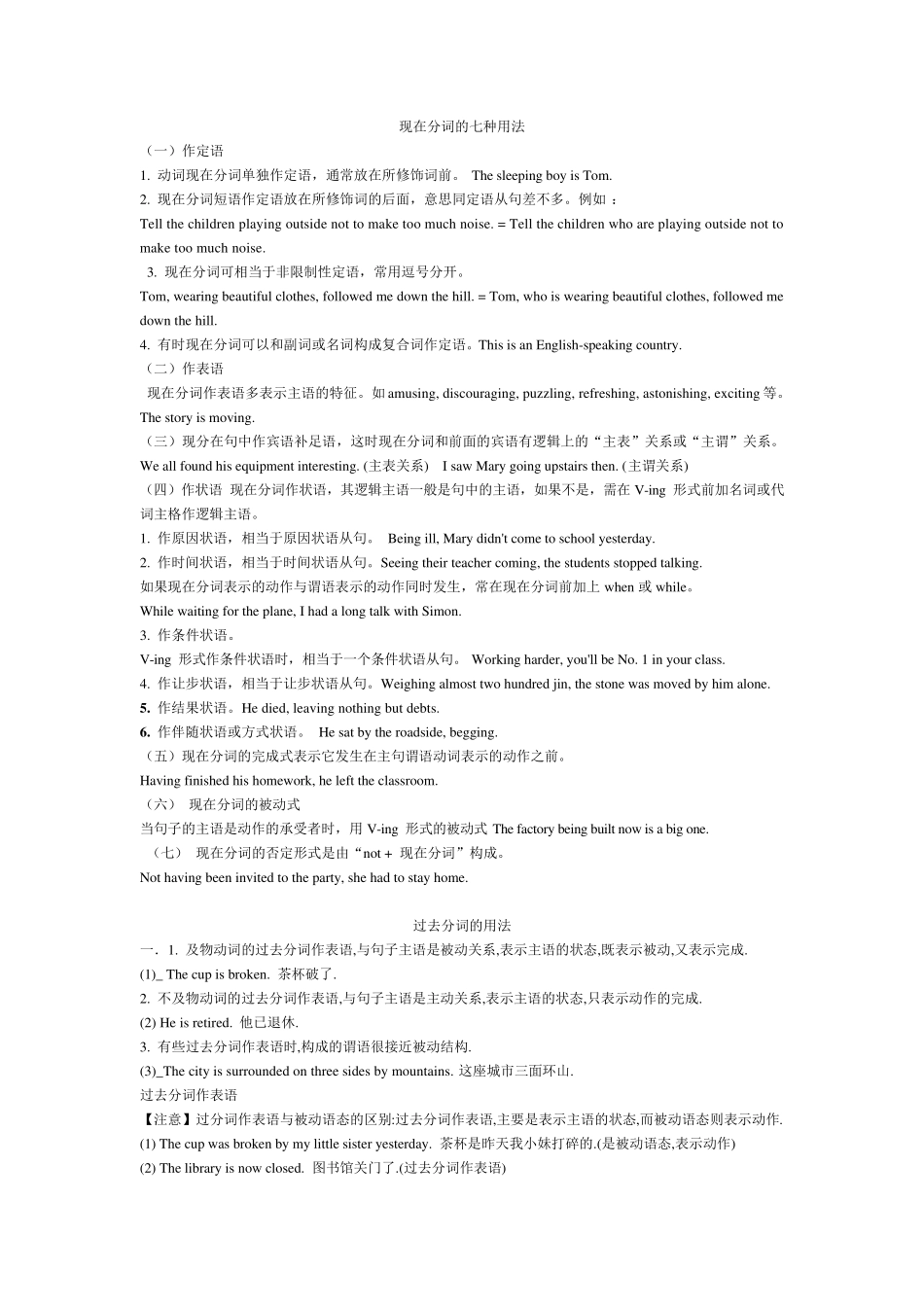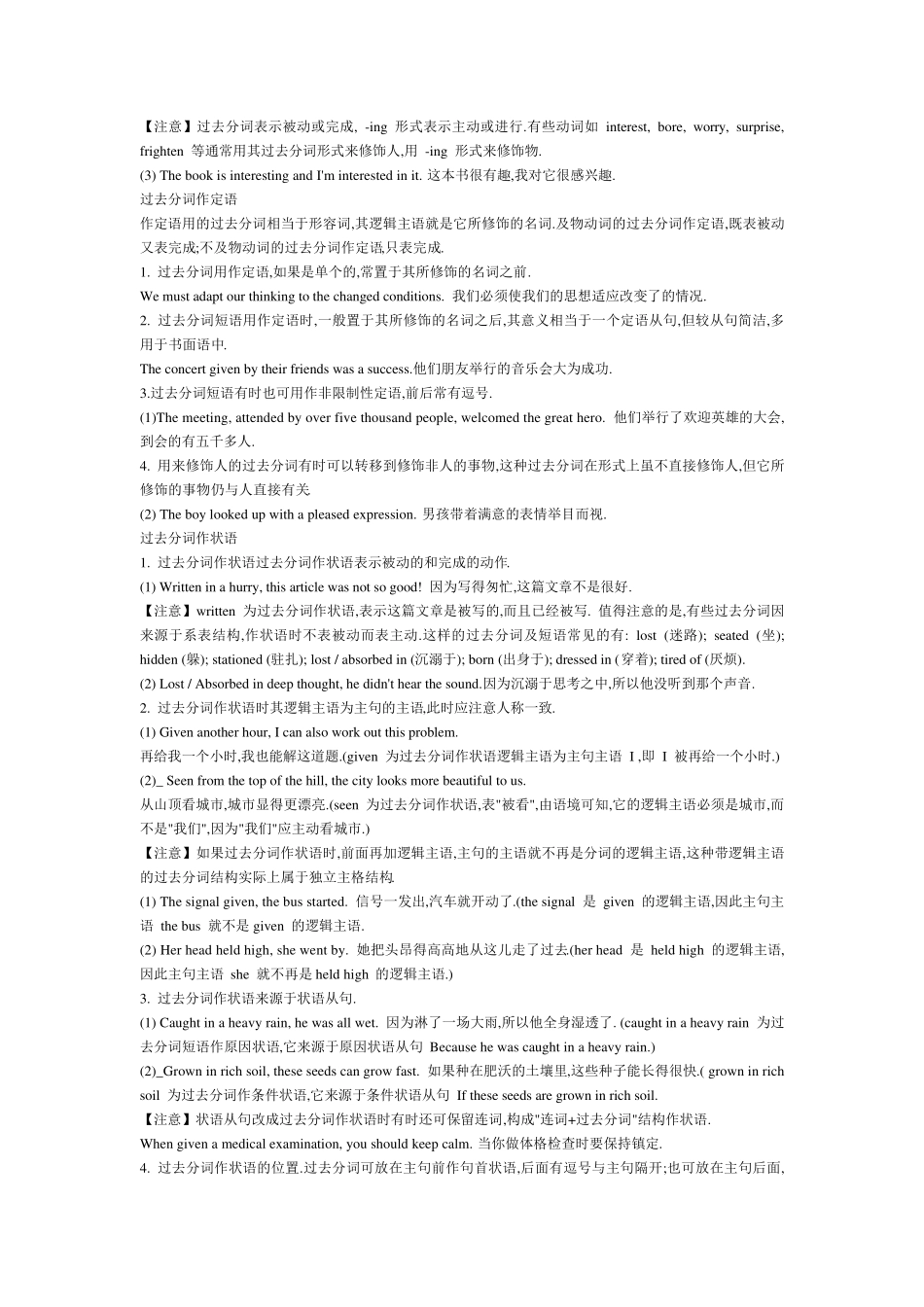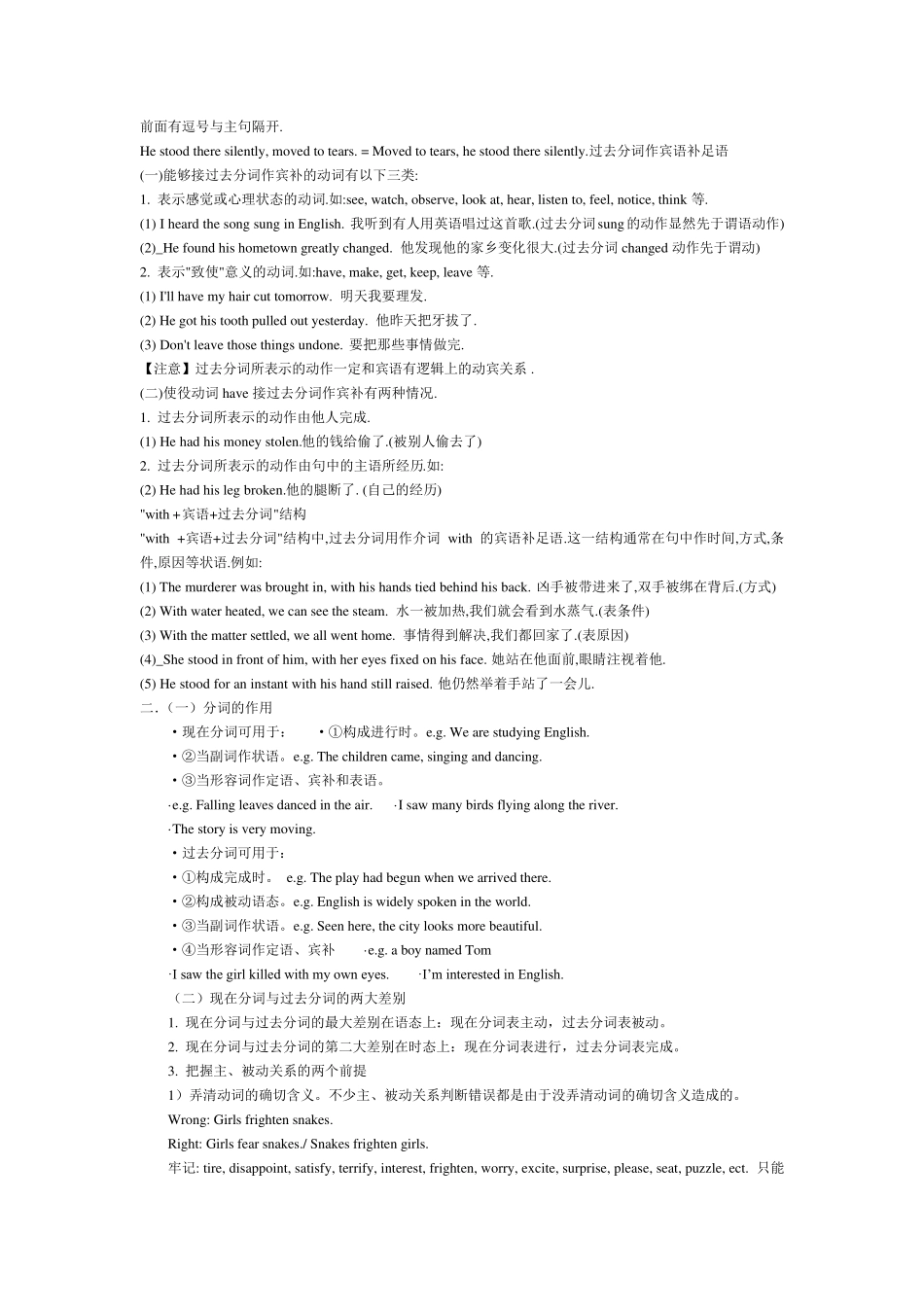现在分词的七种用法 (一)作定语 1. 动词现在分词单独作定语,通常放在所修饰词前。 The sleeping boy is Tom. 2. 现在分词短语作定语放在所修饰词的后面,意思同定语从句差不多。例如 : Tell the children playing outside not to make too much noise. = Tell the children who are playing outside not to make too much noise. 3. 现在分词可相当于非限制性定语,常用逗号分开。 Tom, wearing beautiful clothes, followed me down the hill. = Tom, who is wearing beautiful clothes, followed me down the hill. 4. 有时现在分词可以和副词或名词构成复合词作定语。This is an English-speaking country. (二)作表语 现在分词作表语多表示主语的特征。如amusing, discouraging, puzzling, refreshing, astonishing, exciting 等。 The story is moving. (三)现分在句中作宾语补足语,这时现在分词和前面的宾语有逻辑上的“主表”关系或“主谓”关系。 We all found his equipment interesting. (主表关系) I saw Mary going upstairs then. (主谓关系) (四)作状语 现在分词作状语,其逻辑主语一般是句中的主语,如果不是,需在V-ing 形式前加名词或代词主格作逻辑主语。 1. 作原因状语,相当于原因状语从句。 Being ill, Mary didn't come to school yesterday. 2. 作时间状语,相当于时间状语从句。Seeing their teacher coming, the students stopped talking. 如果现在分词表示的动作与谓语表示的动作同时发生,常在现在分词前加上when 或while。 While waiting for the plane, I had a long talk with Simon. 3. 作条件状语。 V-ing 形式作条件状语时,相当于一个条件状语从句。Working harder, you'll be No. 1 in your class. 4. 作让步状语,相当于让步状语从句。Weighing almost two hundred jin, the stone was moved by him alone. 5 . 作结果状语。He died, leaving nothing but debts. 6 . 作伴随状语或方式状语。 He sat by the roadside, begging. (五)现在分词的完成式表示它发生在主句谓语动词表示的动作之前。 Having finished his homework, he left the classroom. (六) 现在分词的被动式 当句子的主语是动作的...


